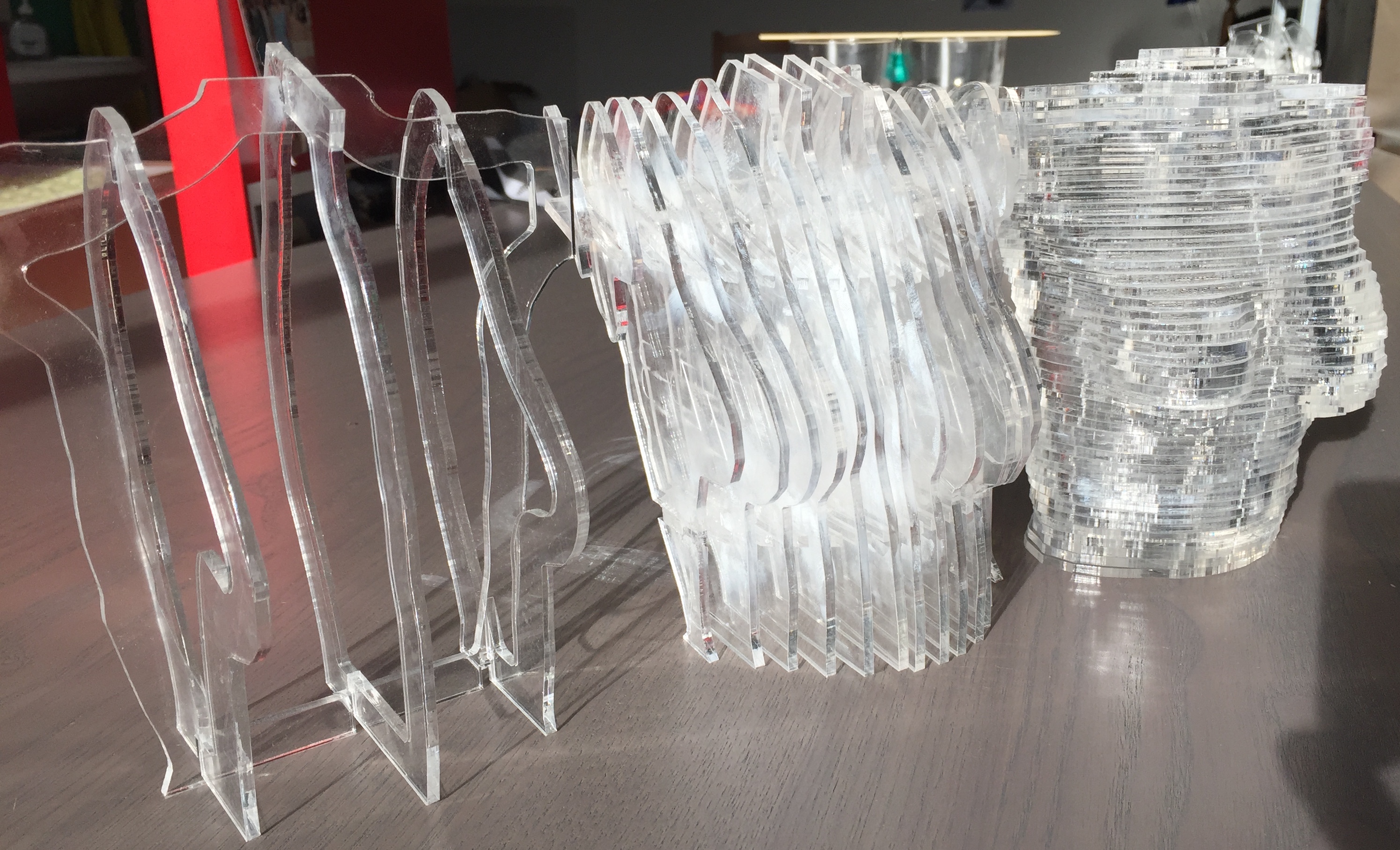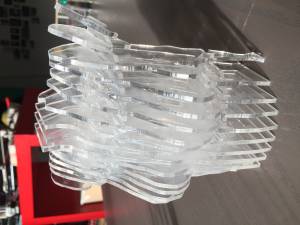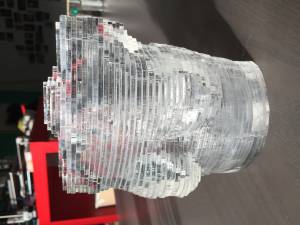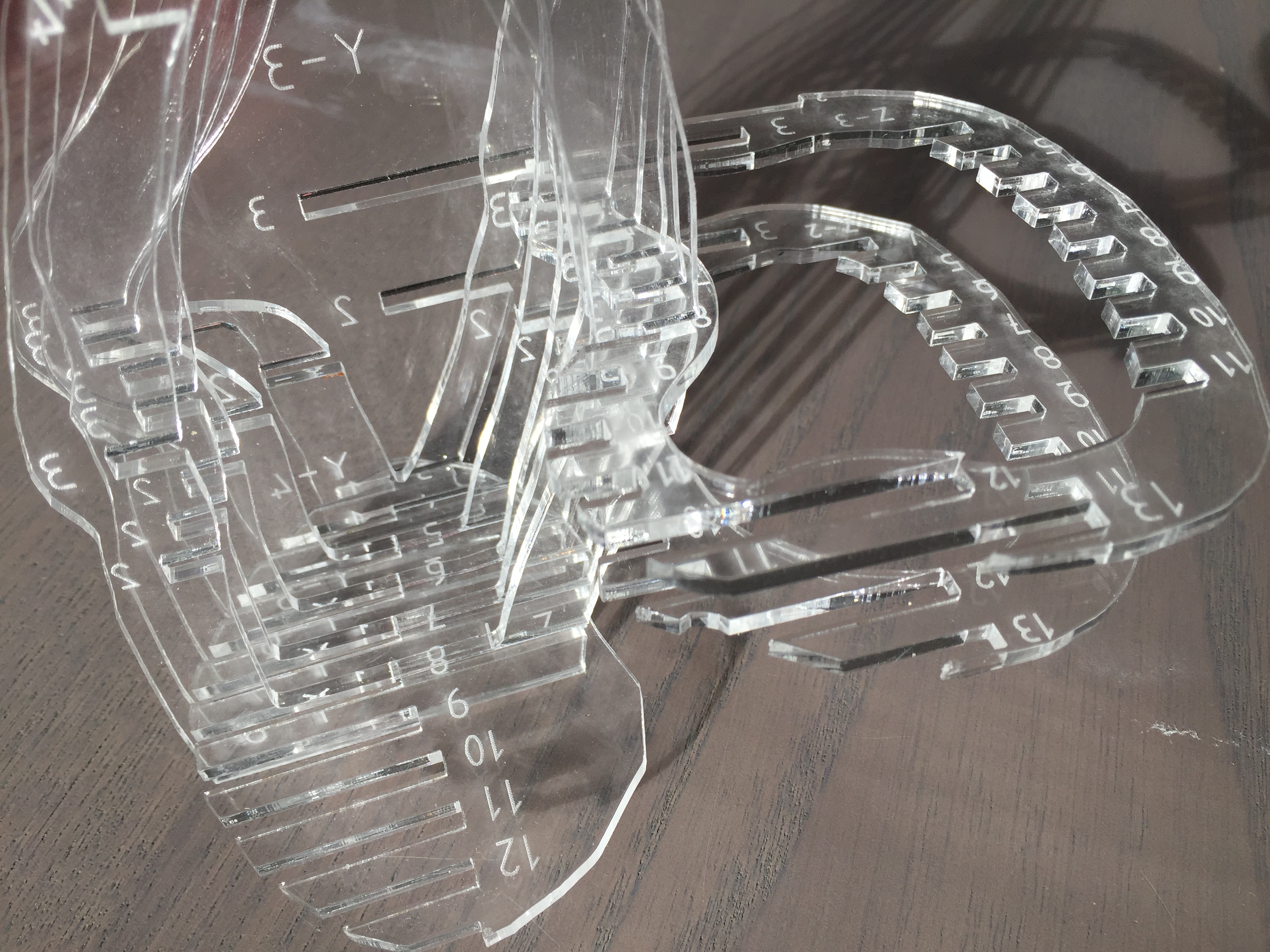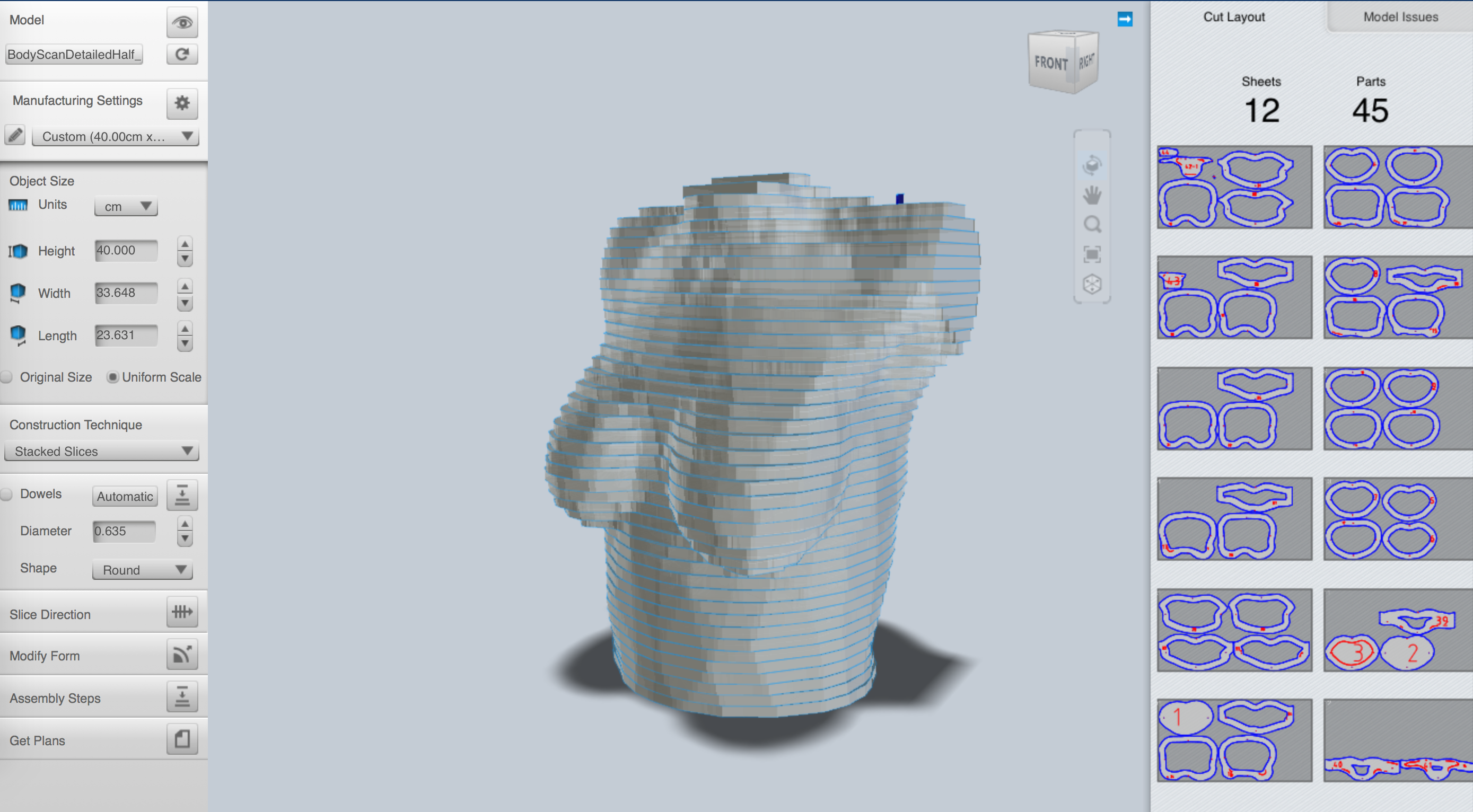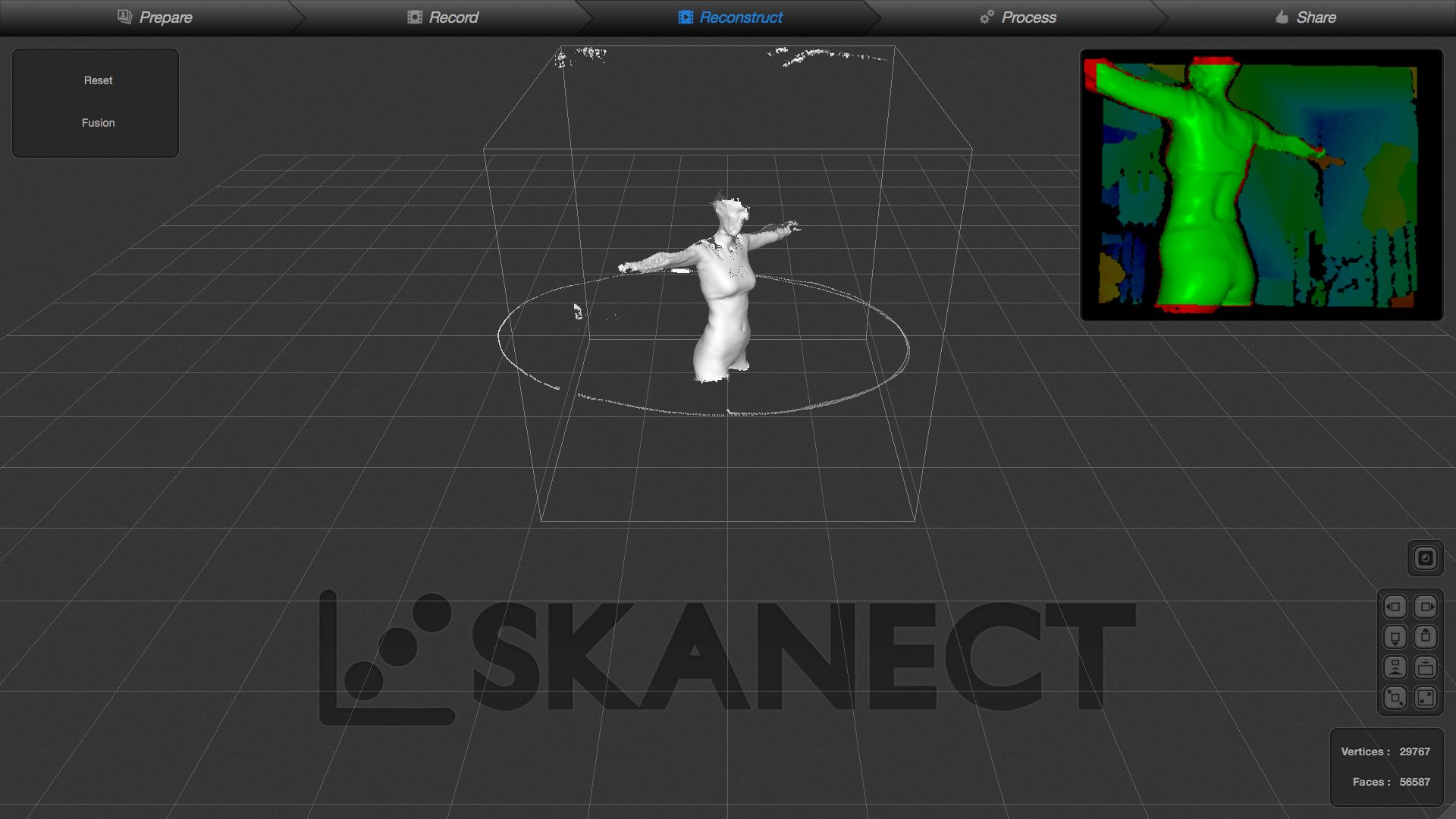Detailed Documentation Week 1
Exercise | Lasercut Bodyscan

For this week I made four small models, of which two didn't work out. I tried to go from 'abundant material use' to the most abstract slicing possible for a 'minimum amount of material' used.
Minimal used material pdf
Reduced amount of material used pdf, the re-tried version.
The lesson here seems really obvious, but it still is something that happend because I trusted the program Slicer for Fushion 360 that showed no errors whatsoever.
I think in the end the small sliced bust, which also uses the most material, turned out definitely to be the most beautiful. For the upcoming DDW2017 exposition I wanted to make a full-scaled version. However, this would require me to make 45 slices. On this site you can buy acrylic plates for €112,11 / m² (8mm thick), in a medium sized lasercutter (40x70cm) 1 m² would fit twice. 22,5 plates x €112,11 = €2552,48. Although this amount might be lower when material is used more efficient, still, after this calculation I decided to leave this project for until I win a lottery.
Optimising The Scan
In the image below, we used a stool to turn the body which is why the legs of the body are cut off. Noise is visible in the background which causes part of the scan to be not so good. The circle around the body shows the route the camera took around the body. Here you can see that the path is not completely steady and only done from one position.
During the visit 9th of January 2018 I saw Bioracers bodyscan setup, to my surprise they use the same (cheap) technology to make a bodyscan. However, completely optimised its setup in such a way that the scan's accuracy would go up. So, to make such a setup work at its best you need a pole(~€30) where the Kinect(~€99) can be steadied at certain heights, a 360 degree turning floor-hight pedestal(~€50), and a painted green wall(~€20) behind. With these tools you can make a really great bodyscan-space for about €200. It does require some DIYing.
